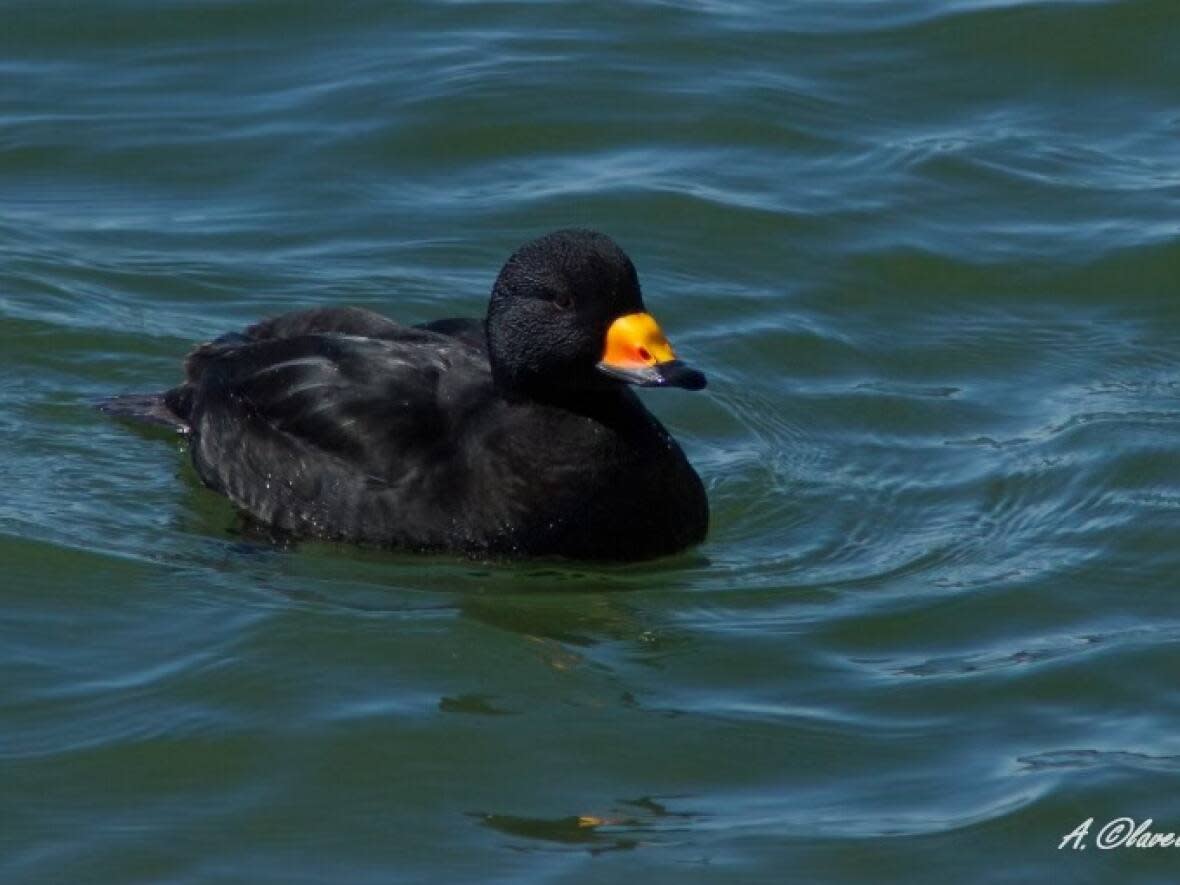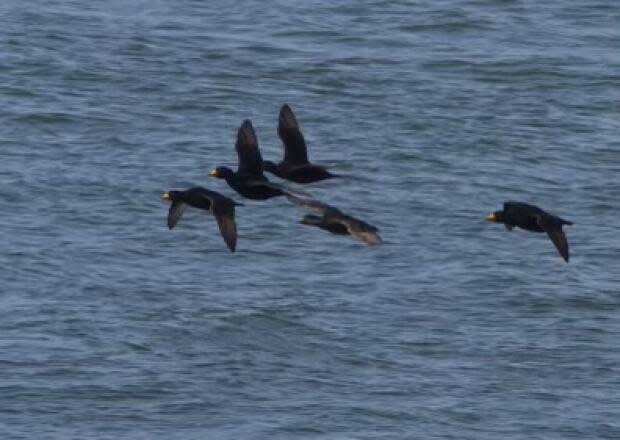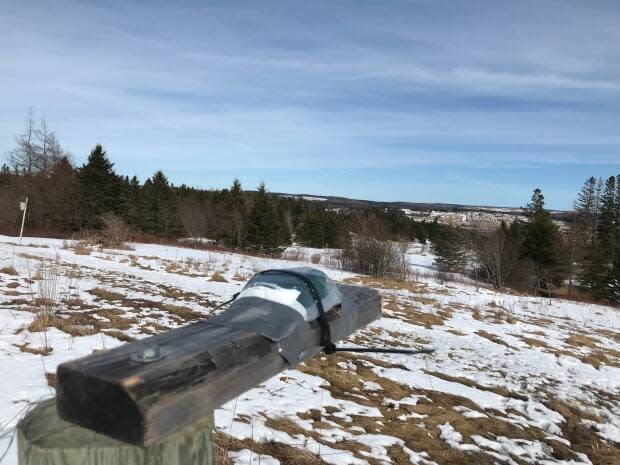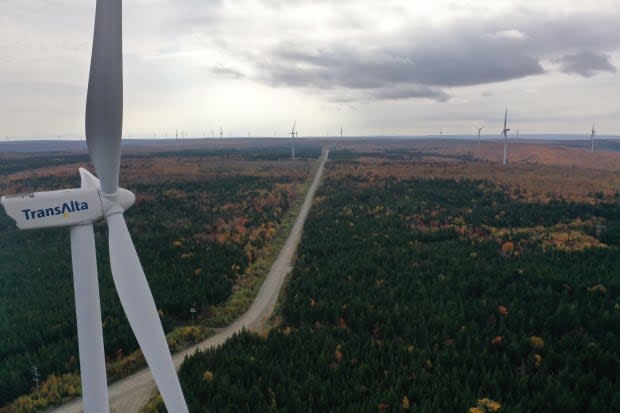Radar tracking sea duck migration across southeast N.B. skies

The migratory path of black scoters is being followed over southeastern New Brunswick by researchers from Acadia and Mount Allison University, using marine radar and acoustic monitors set up in the Memramcook, Petitcodiac and Tantramar areas.
The findings could help protect these large sea ducks that migrate each spring from the Bay of Fundy, and further down the Atlantic coast, to northern Quebec and Labrador, according to Devin de Zwaan, an avian ecologist and researcher at Acadia and Mount Allison universities.
"Black scoters can run into transmission lines or wind farms. And so we're really trying to get an idea of where the highest risk would be during migration," de Zwaan said.
The International Union for the Conservation of Nature designated black scoters as near threatened in 2018, meaning the species could enter a category like endangered or vulnerable in the future.
The annual number of these ducks that migrate through the area is estimated to be between 48,000 and 160,000, according to a study published in Waterbirds: The International Journal of Waterbird Biology, although it was conducted between 1996 and 2004.
It's difficult to estimate the number of scoters that have been killed by human infrastructure, de Zwaan said, as there are few sources of information that track fatalities.

Researchers are using marine radar to track the skies, de Zwaan said. The radar sends out electromagnetic radiation, which pings off birds as they fly by.
Unlike a radar unit used on a boat, the one being used for this project is spinning vertically, like a propeller.
"So we're basically scanning straight up. And that allows us to get more accuracy of flight altitude," he said.
The peak of scoter migration is the first two weeks of April, but radar and monitors will be kept in place until the end of the month, at least.

The team then pairs that data with acoustic recorders called an AudioMoth, which are about the size of a smartphone.
"They essentially are pointed directly up and they record calls as birds move over [them] during the night," said de Zwaan.

The team has placed 55 AudioMoths throughout the research areas in the southeastern part of the province.
The scoter calls are almost ghostlike, which can create an eerie scene as the birds migrate under the cover of darkness.

There are a few theories as to why the birds make those noises, de Zwaan said, one of which is to communicate.
"If you're in this large flock, it's dark. Maybe there's a change in direction, there needs to be some sort of communication for that."
Providing the tools for conservation
If the team can determine whether there's a period of a few days where scoters migrate in large groups in distinct locations, de Zwaan said, it could help with the planning of projects such as wind farms.
"For example, not to propose wind farms in those areas or to shut down the turbines for a couple of nights. So if that's the case, it should be fairly predictable," he said.

He said the team has already prepared some preliminary reports for the Canadian Wildlife Service and Climate Change Canada, which are both federal departments.
The team is also in touch with industrial companies and regulators in New Brunswick and Nova Scotia.
"The best way to inform conservation action is to have a close back and forth working relationship with those people that actually have the ability to make on the ground changes," he said.
'Litmus test'
Alain Clavette, an ornithology teacher and writer, lives right below the "migration highway" used by black scoters.
He can see the radar the researchers have installed from his home.
"If you imagine a boat, you know, we've seen that on boats, you see this big white bar that is turning around," he said.
Clavette was part of the reason this research is taking place. He knew his home was under a migration highway and shared it on social media, which caught the eye of a student working in the same lab as de Zwaan a few years ago.
He's hopeful the research can help protect scoters.
"Sea ducks are, you know, also a good litmus test of the environment, of the state of the environment," he said.
While Clavette was watching the researchers set up their radar for their research this spring, a huge flock of ducks flew by.
"Everybody laughed because it was like, holy jeez, it's almost like they're coming to tell us 'you're at the right place.'"


